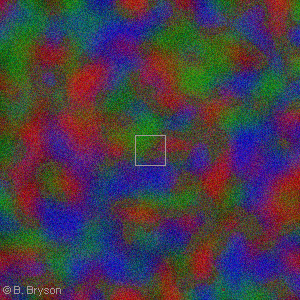About This Image

There is a reason for the colors that appear in this drawing. On the More Info page (10-16), I talked about the strong, or color, force. The concept of quarks involves the idea that they are found only as bound particles, either a group of three quarks producing baryons, or a quark/antiquark pair producing mesons.
Quarks are theorized to come in three colors, by convention red, green, and blue. Thus an up quark can be red, green, or blue and similarly for a down quark. All particles that are made of quarks, whether baryon or meson, are color neutral. So in a proton consisting of two up quarks and one down quark, there must be a quark of each color present to produce a color neutral proton.
The same is true for mesons. Recall that every particle has an antiparticle. This is true of quarks as well. Mesons are made up of a quark and antiquark, so if a meson contains a red quark it will also have an antired antiquark, producing a color neutral particle.
The idea of the color force also explains the observed fact that there has never been a particle found that contains just two quarks, or two antiquarks, or a single isolated quark. In every case, color neutrality would be violated.
Is this all perfectly clear?
(Return to the previous page using your browser's Back button.)
 
Copyright © 2005 by Bruce Bryson
|